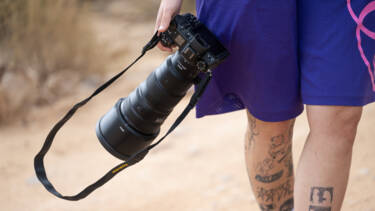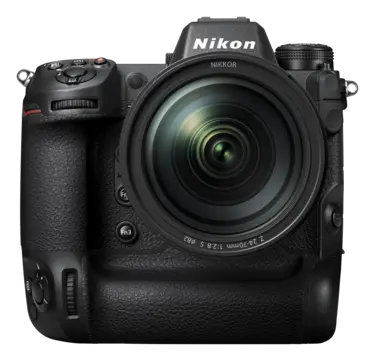How to make the most of this summer’s golden hour with backlighting
Correct positioning, adjusting exposure and low ISO are the keys to harnessing summer rays for backlighting, says landscape photographer Scott Antcliffe
As the sun dips low on the horizon casting a warm glow across the landscape, photographers have a unique opportunity to create stunning images using backlighting. This technique, where the main light source is behind the subject, can produce dramatic and ethereal effects that transform ordinary scenes into extraordinary photographs. Let’s explore the power of backlighting.
D850 + AF-S VR Micro NIKKOR 105mm f/2.8G IF-ED, 105mm, 1/1000 sec, f/4, ISO 100, ©Scott Antcliffe
When to use backlighting and why
Backlighting is particularly effective during the golden hour, the magical period shortly after sunrise or before sunset when the sun is low in the sky. This time offers soft, warm light that’s perfect for creating atmospheric images with a dreamy quality.
- Enhancing drama and mood. Backlighting can add a dramatic effect, especially during golden hour when the light is warm and soft. This is perfect for creating moody, ethereal images.
- Creating silhouettes. If you want to emphasise the shape of your subject without focusing on details, backlighting is perfect for producing striking silhouettes against a vibrant sky.
- Highlighting translucent subjects. Backlighting works beautifully with translucent subjects, such as leaves, petals or even the fine hairs on a person’s head, making them glow.
Camera settings
To make the most of backlighting during the golden hour, follow these steps to set up your camera:
- Choose your lens. A wide-angle lens (24-35mm) is often ideal for landscape backlighting, while a medium telephoto (85-135mm) works well for portraits.
- Set your camera mode. Manual mode gives you the most control over your settings.
- Adjust your ISO. Start with a low ISO, around 100-400, to minimise noise. You can increase this if needed for faster shutter speeds or as it becomes darker.
- Set your aperture. For landscapes with a wide depth of field, use f/8 to f/11. For portraits with a shallow depth of field, try f/2.8 to f/4.
- Determine shutter speed. This will depend on your subject and desired effect. For landscapes, start around 1/250 secs to freeze details that might be moving.
- White Balance. Set to ‘Daylight’ or ‘Shade’ for a warmer tone or use a custom White Balance for more control.
- Exposure compensation. You may need to use negative exposure compensation (-1 to -2 EV) to avoid overexposure, especially when creating silhouettes.
- Metering mode. Spot metering can be helpful when focusing on a specific part of your backlit subject.
- Autofocus mode. For stationary subjects, use single-point AF. For moving subjects, consider AF-C (continuous autofocus).
- RAW Format. Photograph in RAW to give yourself more flexibility in post-processing.
Z9 + NIKKOR Z 14-24mm f/2.8 S, 21mm, 1/200 sec, f/4.5, ISO 100, ©Scott Antcliffe
Composing your backlit image
Composition plays a crucial role in maximising the effect of backlighting. Here are some tips to consider:
- Position the sun carefully. Place the sun slightly off to the side or directly behind your subject. This positioning prevents the sun from overpowering your image while still achieving that beautiful backlit glow.
- Frame with elements. Use natural elements such as trees, leaves or buildings to frame your subject. This can help block direct sunlight from hitting the lens, reducing lens flare while adding context to your composition.
- Experiment with angles. Move around your subject to find the best angle, where the backlight creates a pleasing halo or silhouette. Sometimes even a slight adjustment can make a significant difference in how the light interacts with your subject.
Z9 + AF-S NIKKOR 70-200mm f/2.8E FL ED VR + Mount Adapter FTZ II, 70mm, 1/250 sec, f/2.8, ISO 80, ©Scott Antcliffe
Tips for post-processing
- Adjust exposure
Start by tweaking the exposure slider to balance your image. Since backlit scenes can often lead to underexposed subjects or overly bright backgrounds, adjust the exposure to bring out details in the shadows without losing the highlights. - Recover highlights and shadows
Use the highlights and shadows sliders to recover lost detail. Lower the highlights to bring back detail in bright areas, and increase the shadows to lift dark areas, revealing more of the landscape. - Enhance the warmth
Golden hour light is naturally warm, so use the temperature slider to enhance this effect. Push it slightly toward the yellow/orange spectrum to emphasise the golden glow. - Add contrast and clarity
Increase the contrast slider to make your image pop, and use the clarity slider to add midtone contrast, enhancing the texture and detail in the landscape. - Reduce lens flare
If lens flare is too intense, use the spot removal tool to clean up any distracting spots or unwanted flare, while maintaining the overall backlit effect. - Fine-tune with the HSL panel
Use the HSL (hue, saturation and luminance) panel to adjust specific colours. Increase the saturation of warm tones to enhance the golden hour glow and reduce any unwanted cool tones.
These adjustments will help you create stunning, balanced backlit landscape images that retain the magic of golden hour. Ready to get started?
More in Travel and Landscape
Featured products
More by Scott Antcliffe

Unlock greater creativity











